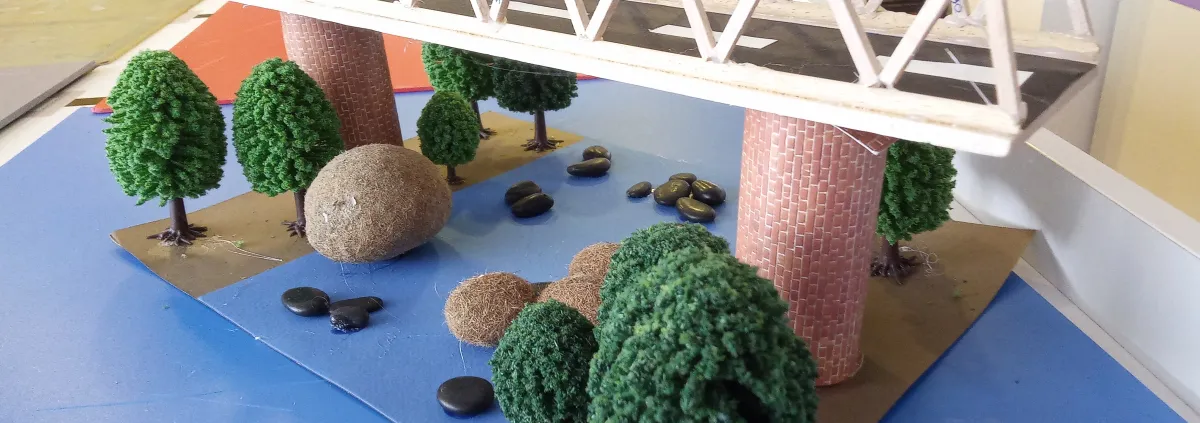|
Level: for Intermediate Setting: Formal Format: In-person Subjects: MYP Design |
The project centres around the concept of sustainable product design, with a specific focus on the design of a Truss Bridge. This project is designed for year 9 students and involves the use of software, specifically a bridge design simulator called Bridge Designer. To kick off the project, students watch a video that delves into the world of bridges and are prompted to reflect on it. They are encouraged to contemplate the fundamental needs driving the construction of bridges as well as the potential societal and environmental implications, all through the lens of sustainability. Based on the above, the students are asked to imagine a scenario in which they act as engineers and are approached by a client, such as the mayor, to build a connection between two locations. The students should emphasize the importance of establishing this connection and illustrate the potential impact on the community if a bridge is not constructed.
Students are required to conduct research on the topic, with an emphasis on various specifications. Two are deemed particularly significant: Function, which considers the stability of the bridge, and Sustainability, which revolves around environmental issues during the construction phase.
Using Bridge Designer, students design bridges with defined specifications, simulating their function. They discuss terms like tension and compression, types of steel, and sustainability implications throughout the construction phase. They choose the best design according to the specs and decide upon the way they will make their models.
The ultimate culmination of this project involves students creating a scale model, according to their designs, either constructed from wood or 3D printed using CAD software like Onshape, to showcase their design work. Before creating their models, students make timetables to organize their work and systematically fill in a process journal to showcase the development of their work.
The final step involves self-evaluating their work (designs and models) according to their specifications. They use Excel to create graphs that show the forces applied to each member of their bridge. The Bridge Designer produces the necessary data, and they try to explain the graphs. Through peer evaluation, they receive feedback from their classmates on their work. Finally, they propose improvements based on the evaluation.
Throughout the process, students adhere to the MYP Design Cycle, the structured framework that guides them through the steps necessary to design a sustainable truss bridge.
In this MYP Design course (Year 9), students utilize the design cycle as a tool to structure their projects and effectively solve any problem. Design Thinking is central to the process, resulting in solutions that are based on client needs and sustainability. Utilizing GRASPS https://www.aidan-hammond.net/new-blog/2021/9/24/revisiting-grasps-a-model-for-project-based-learning is an excellent method for creating a learning scenario tailored to a school's specific needs and resources.
A key focus of the project is to align with Sustainable Development Goal number 9, which emphasizes the need to "Build Resilient Infrastructure, promote inclusive and sustainable industrialization, and foster innovation."
We implement Project Based Learning as part of our educational approach. By leveraging the MYP Design Cycle, we aim to integrate sustainability into our daily lives. Our goal is to foster interdisciplinary teaching by adopting an STE(A)M approach and to encourage students to explore and comprehend the Sustainable Development Goals (SDGs). Our emphasis is on cultivating problem-solving skills and critical thinking. Although each student works independently on their project, they have the option to seek assistance from peers when necessary. This project fosters differentiated education by allowing students to demonstrate their learning through various methods.
This project is part of the Y9 MYP Design course and could involve Science and Math (even History) depending on the schools' curriculum. Students can work in teams of two or alone.


Thank you!